Flexibility and stretching will definitely Improve your dance technique, it doesn’t matter if you are a beginner or a professional dancer, they are very important for dancers, stretching helps loosen your muscles, which helps to prevent injury. exercises. But did you know that it can also help slow the degeneration of joints and helps you reduce and manage stress?
Whatever time you have to try it out, the benefits of flexibility and stretching are huge. Our bodies are made up of muscles and ligaments that are designed to be moved daily, but overuse it will cause injuries and no movement or very little could mean stiff joints, sore muscles, less flexibility or bad posture. We have an article of how to take care of your body as a dancer which complete this article in every way
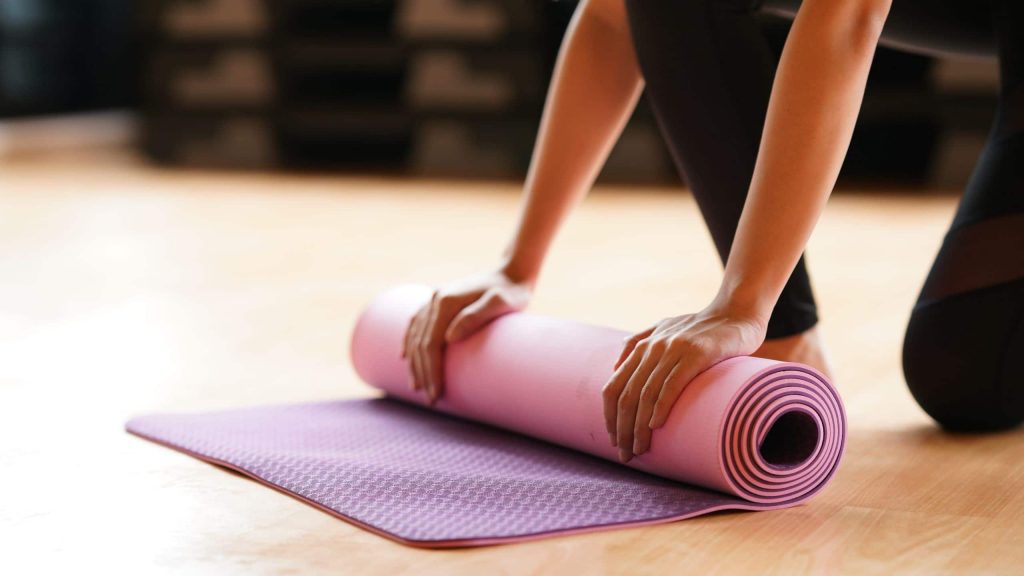
It’s time to find out why? What purpose does it solve? For dancers, is flexibility just for doing fancy dance tricks? It’s obvious that it gives you a wider range of movement, so it will dramatically improve your Dance Technique but what can you do without it?
Let’s face it, not everybody is blessed with a naturally flexible body and many of us have a mental block about it being too painful
Optimize Your Performance.
Stretching prepares the body to exercise by loosening the muscles. A flexible joint requires less energy to move which means stretching creates more energy-efficient movements during your dance practice and on the dance floor. When less energy is put towards your joints during exercise, and you will have more energy to dance and exercise longer.
A slow warm-up and stretching routine daily prepares you mentally and physically for movement. Flexible joints need less energy to allow movement and hence you can practice for longer and perform better, stretching daily despite soreness and pain teaches you discipline and work ethic, which will take you a long way in life.
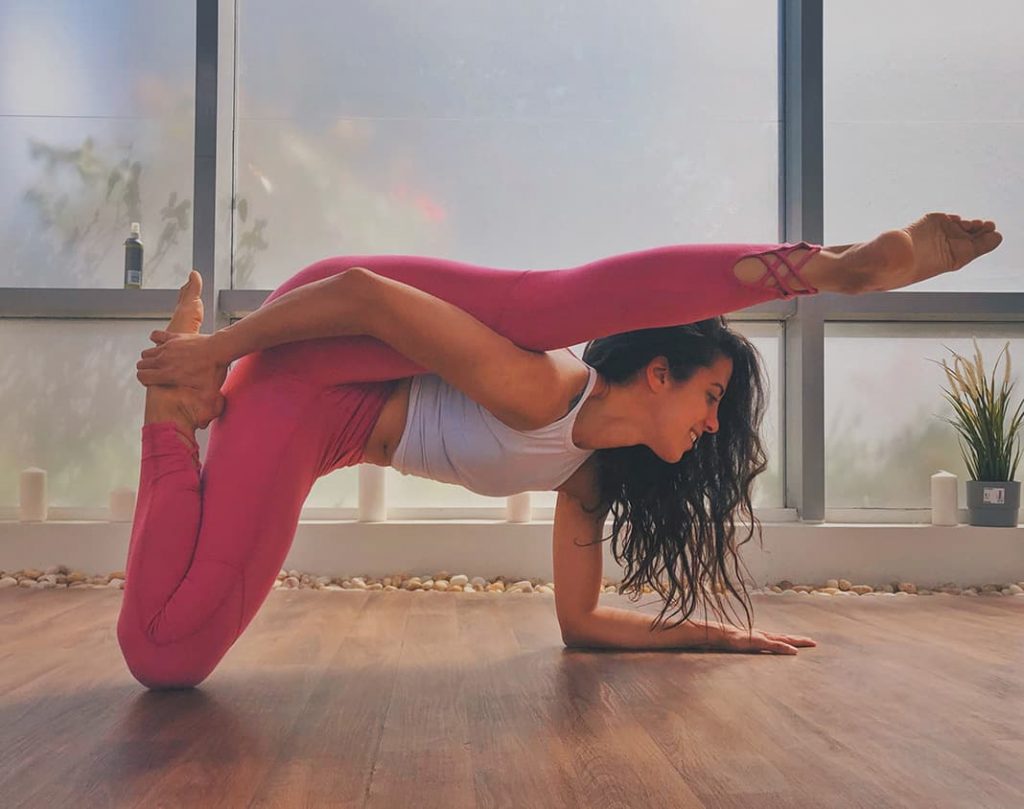
It’s not just ballet dancers or yoga trainers who can learn to be flexible, stretching, every day or a couple of times a week can help to keep the muscles supple. Stretching keeps the muscles flexible, strong, and healthy. We need that flexibility to maintain a range of motion in the joints, Without it, the muscles shorten and become tight. Then, when you call on the muscles for activity, they are weak and unable to extend.
Increases Strength and Speed
It increases your speed in movement because joints allow movement with ease in a body that is more flexible. In addition to being able to touch your toes, flexibility results in increased strength and speed, and it helps with overall performance when it comes to anything physical or athletic.
Promotes Blood Circulation
It improves blood circulation in the body and the flow of life energies. Red blood cells carry oxygen that muscles and joints need during activity. This allows for more flow in your dance technique and transitions are more smooth.
Stretching increases the blood supply to your muscles and joints which means that the transportation of nutrients is increased and overall blood circulation is improved throughout the whole body. When you consider the benefits of good circulation due to stretching, you understand why you should stretch everyday.
Flexibility Increases Mindfulness and Mental Clarity
Sometimes we just need a way to mentally digest the day and calm our bodies and mind down. Research has shown that static stretching activates your parasympathetic nervous system. Your parasympathetic nervous system is responsible for your rest and digestion functions. It helps induce feelings of calmness and relaxation.
Stretches demands you to be focused in a small area of our body. This has several benefits for our brain and it increases oxygen supply to the brain and our overall well-being. It will even help you remember choreography.
Flexibility & Stretches Reduce and Manages Stress.
When we’re stressed not only does our heart rate increase but we tend to tighten our muscles. So, how can stretching help us relieve this tension? Stretching helps relax tight muscles while also taking personal time to focus on your body and slow down, Because when you breath, your heart rate slows down, and you become calmer.
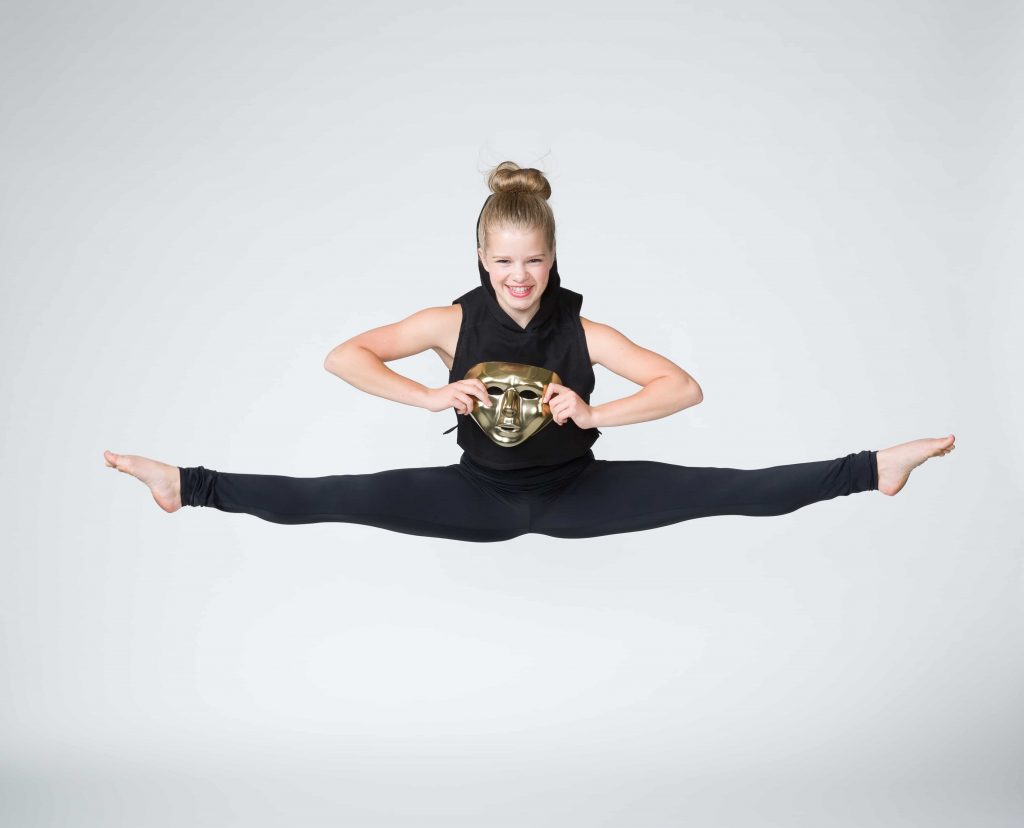
Stretching relieves stress in the whole body and if you aren’t stretching daily, try it especially on the days when you feel stressed. If you’re sitting down, start by slowly massaging your toes and move up patiently going through every part of your body, right up to your face or vice versa.
Stretching reduces the tension in your muscles which results in less stress throughout your whole body. On days that you are feeling especially stressed, try stretching all the muscles in your body, starting with your face muscles, until you get down to the muscles in your feet to feel the pent up stress leave your body.
Slows Degeneration of Joints
Stretching and flexibility drills keep the fluid material around the joints in good supply and hence the joints remain healthy for more years. It allows for more range of motion and prevents diseases like Arthritis.
Stretching can be a great way to get the body ready for exercise, especially if you’re putting it under a lot of strain. White explains, while she goes on to reveal that it can also enhance physical performance. By stretching our muscles, it can increase the mobility of the joint, therefore maximizing the potential of the muscle to produce more force.
As movements such as dancing consist of many repetitive movement patterns, certain muscles can become overused and tight. Static stretching after a dance class can help to restore this muscle imbalance.
“Dynamic stretching increases blood flow to the muscles and is a great way to prepare the body for more intensive exercise”
It Helps in Avoiding Injuries.
This is because a flexible body experiences less stress while moving. It is one of the biggest benefits of flexibility and stretching for dancers, martial artists, sportsmen and the like. These people work long and hard, throughout their life to master their chosen art form(s) or sport and injuries can cause a major setback.
When injury strikes it could sometimes mean weeks, if not months, so stretching is a great way to make sure this doesn’t happen, as it increases blood supply and oxygen to your muscles and joints, allowing greater nutrient transportation, and improves the circulation of blood throughout the entire body.
Injury and fatigue are common in the world of performing arts. Stretching will relieve muscle pain, tenderness and soreness after a heavy workout or a long day of classes and rehearsals.
Stretching helps relieve pain all over the body to relieve pain and pressure on the spine. Flex your calves to relieve pain caused by shin splints. Stretch your feet to relieve pain from plantar fasciitis. It can also relieve muscle pain, soreness, and tenderness that accompanies exercise.
Improves Posture
Sitting in front of a computer can be uncomfortable, but also, cause a muscular imbalance between the front and the back of the body. This is because the chest muscles start to shorten and tighten, while the muscles in the back start to lengthen and weaken. If you stretch the muscles in your shoulders, lower back, and chest, your back will better aligned and your posture will be improved!
The correct posture when we are sitting or standing can affect the whole body, your nerves, blood flow and muscles. But no one can blame us for not having the correct posture, especially if we sit at a desk all day. To bring the spine back into an upright position, stretching the muscles in the front alongside strengthening the muscles in the back, supports and holds the spine upright to improve and maintain optimal posture.
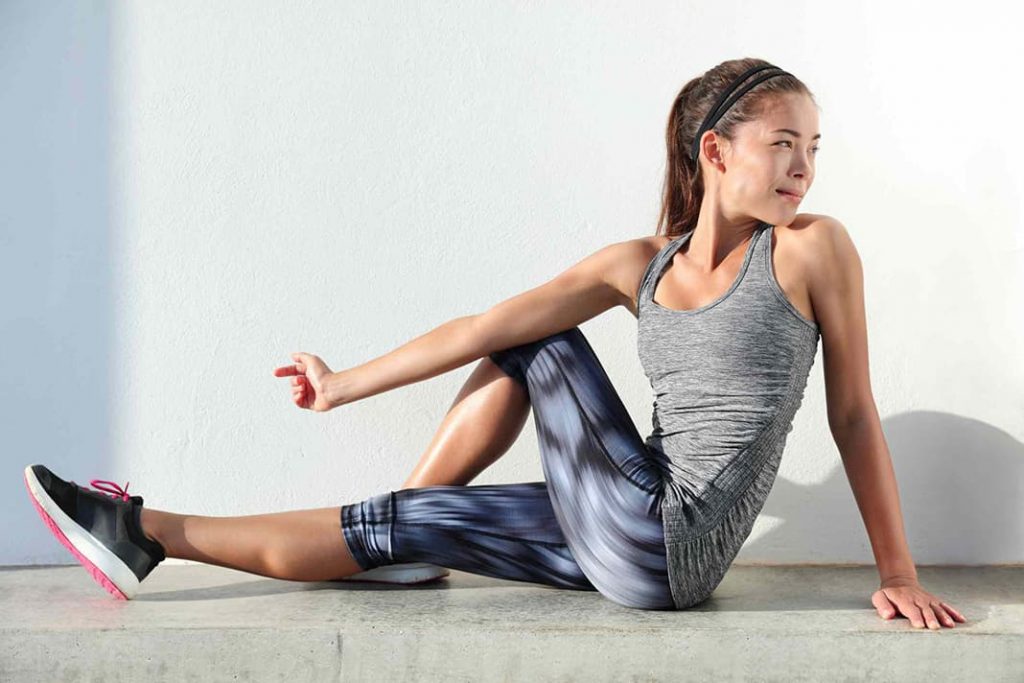
If you’re someone who suffers from back pain, whether you’ve over-exercised, slept wrong, or have niggles now and again you could benefit from stretching your body. Stretching can help to alleviate pain by loosening up tension in the muscles and increasing blood flow to the area.
For mid and upper back stiffness, dynamic stretches such as the ‘cat-cow’ or the ‘thread-the-needle’ stretch can help to gently mobilize the spine and stretch the muscles that surround it. The muscle is located on the lower back on either side of the spine and can benefit from being stretched, as it is often tight and overused by having to compensate for the other stabilizing muscles.
Better Sleep
We know that sleep is important for our well-being – physically and mentally, the more sleep we get the more energized and focused we’ll feel. But, for some of us, we find it hard to even drift off. So, can stretching before bed help?
Stretching, as part of yoga, can improve quality of sleep by reducing mental stimulation. When you’re still, or stretching and breathing we go from sensory overload to a sense of slowing down and a quality of ease begins to run throughout the body.
Flexibility is an important part of dance. Dance flexibility can take up to 3 months or so of constant discipline depending on the age of the dancer. It can be frustrating for dancers who expect to see results right away.
Favorite Exercises
But the thing is that you will feel different and more flexible within two weeks, and your body will start to shape and will be ready for more exercises. We gathered some of our favorite exercises to help you improve your dance technique, so lets get started.
Standing Hamstring Stretch Exercise
This stretch is great for the neck, back, glutes, hamstrings, and calf muscles. Start off standing tall with your feet hip-width apart. Bend your knees slightly and rest your arms by your side.
Exhale as you bend forward from the hips and lower your head to the floor. Try to keep your head, shoulders and neck relaxed as you do this stretch. When you are done holding your stretch bend at the knees and roll your way back up to a standing position.
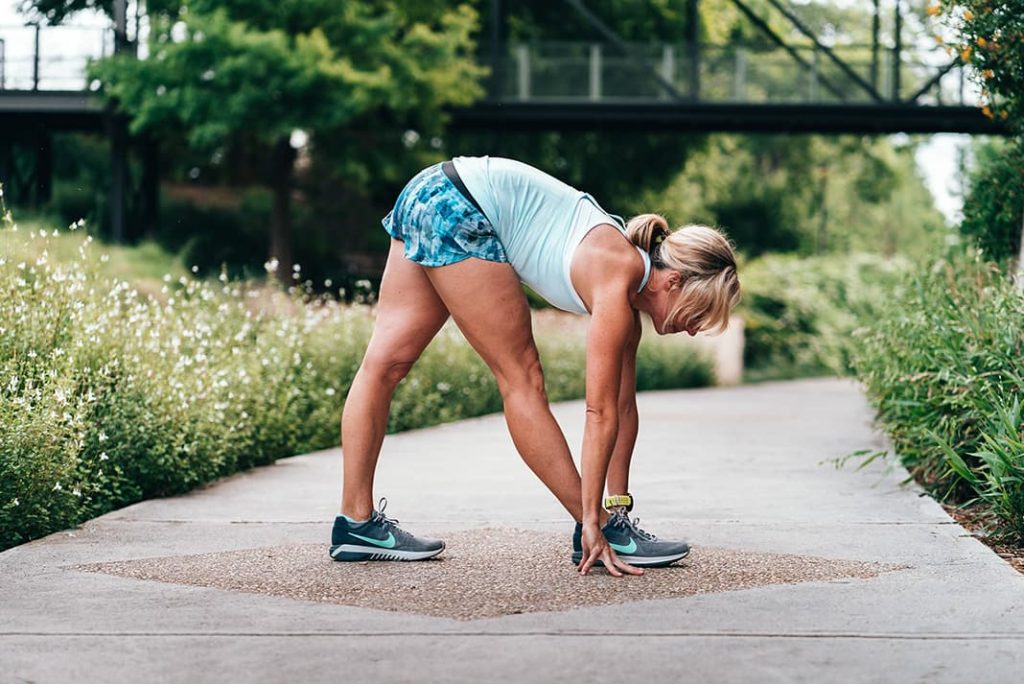
Wrap your arms around the back of your legs and hold. Experts suggest that you hold a stretch for 10 seconds to 2 minutes. If you go into a stretch and feel as if you immediately want to release it is a sign that you need to spend more time stretching this area as part of your dancer workout plan.
Side Bend Exercise
This easy stretch keeps the groin, and hips inner thighs flexible. Kneel on the floor with your legs together. Keep your back straight and your core engaged. Extend your left leg out beside you.
The reach your right arm up and rest your left arm on your left leg. Gently bend at the torso and right arm to the left side of your body. Try to keep your hips facing forward as you hold the stretch. Then repeat on the other side.
Stretching is an easy, efficient way to improve the overall well being of your body.
Piriformis Stretch Exercise
There’s a tiny muscle you’ve probably never heard of that has a powerful effect on your daily movements, and can even be linked to sciatica. It’s called the Piriformis and it enables you to move your hips, upper legs, and feet away from your body. The piriformis also covers the sciatic nerve that runs from your lower back and down towards your legs
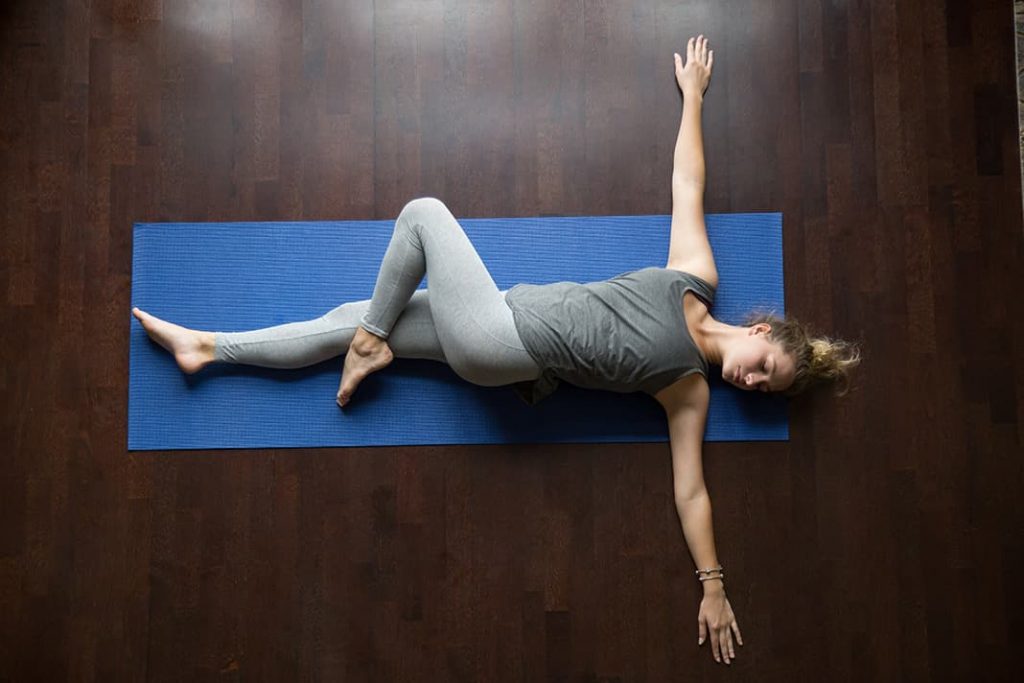
The piriformis muscle is located outside the butt. It is a deep internal hip rotator. Your deep internal rotators produce a lot of movement at your hips and stretching these muscles should be apart of your daily dance workout.
Sit on the floor with both legs extended out in front of you. Cross your left leg over your right and place your left foot flat on the floor beside you. Then place your left hand on the floor behind your body. Put your right hand on your quad or bring your elbow to your knee and press your left leg to the right. You should feel a twist in your body when you are performing the stretch correctly.
90/90 Stretch Exercise
The 90/90 stretch is one of the most effective ways to target the hip capsule. It is a position that challenges flexion and external rotation for the front hip while the trail hip is in the abduction and internal rotation. The ability to rotate efficiently at the hip joint is crucial for overall health.
This is another great stretch for dancers because it hits both hips at the same time. Sit with your right knee bent at a 90-degree angle out in front of your body. Keep your foot flexed and your sole should be facing the left. Let your leg rest flat on the floor as you place your left knee to the left of your body. Bend the knee so that the foot faces behind you. Be sure to keep this foot flexed too.
Try your best to keep your right glute on the floor and move the left glute as close to the floor as possible. This may not be possible if you have been dancing a lot and are super tight in your glutes or hips. Hold the stretch and repeat on the other side.
Lunge With Spinal Twist Exercise
This stretch helps open up your hips and improves mid-back mobility, which is a necessary part of any dance turns. Also helps with deep breathing so you can perform for longer time.
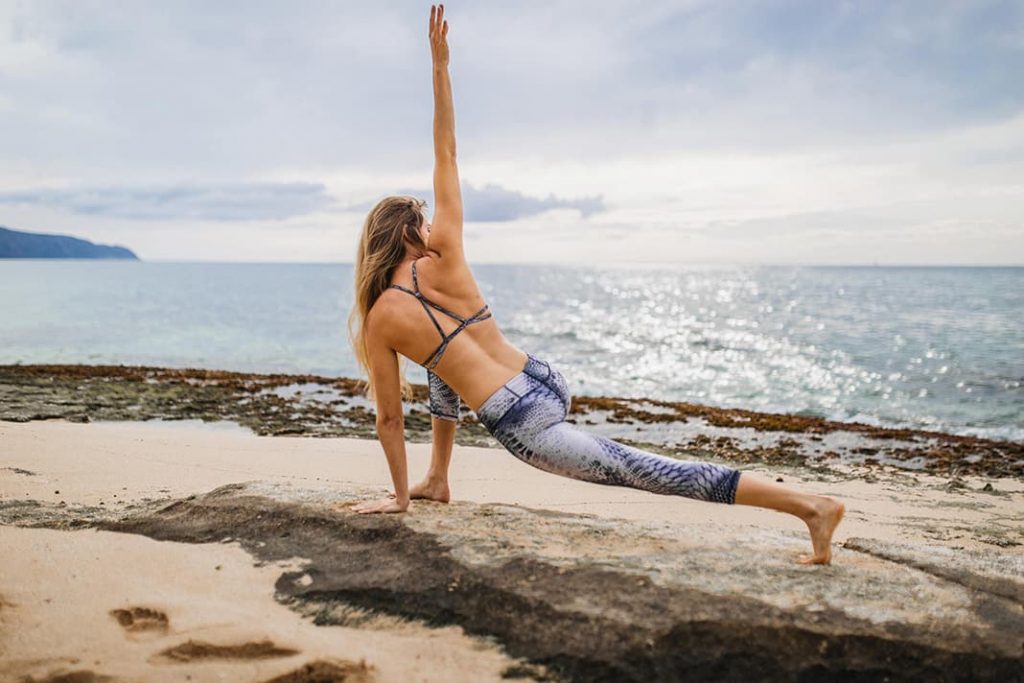
Start with your feet together and take a big step forward with your left foot. Now your feet should be in a staggered stance. Bend your left knee as if you are lunging. Keep your right leg straight behind you.
Your toes should point downward to the ground. You will feel a stretch in your right thigh. Now place your right hand on the floor beside you and twist your upper body to the left. Reach your left arm up toward the ceiling and stretch as if you are trying to touch the ceiling. Hold the stretch and then repeat on the other side.
Tricep Stretch Exercise
An area of deep stretching often overlooked by dancers is the arms. Most dancers focus on the legs but you will also need arm flexibility as well, For a triceps stretch stand tall with your feet hip-width apart. Extend your arms up over your head. Bend your right elbow and reach your hand behind your head to touch the top middle of your back.
You can gently pull your elbow toward your head yo get a deeper stretch. You should feel the stretch in your neck, shoulders, back, and triceps. When you are done holding the stretch repeat on the other side.
You can also perform this exercise on any desk, put your elbow on a desk and raise your hands up, bend over and keep your elbow on the desk, the more you get down the more stretch you feel on your triceps, keep and hold this position for one min or so.
Frog Stretch Exercise
Another one of our dance tips for flexibility is to not sit crossed legged. Crossing your legs can lead to tight hips. Here is a stretch you can do if you do happen to sit cross-legged a lot.
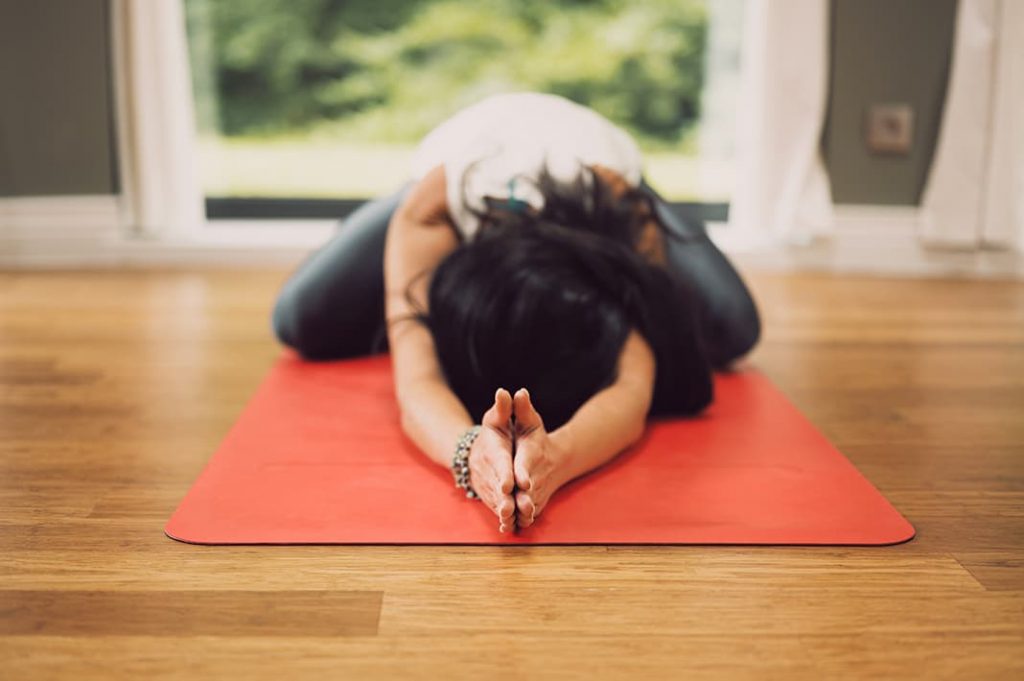
Get down on all fours and slide your knees wider than shoulder-width apart behind you. Turn your toes out and rest the edge of your inner thigh on the floor. Shift your hips back toward your heels and keep your feet flat on the floor.
Neck Stretch Exercise
The neck is an important structure that supports the head and the cervical spine. Because of this, the neck most commonly experience stress and tension leading to pain. Neck pain usually involves muscle spasms and strain. The presence of problems on the muscles and bones at the neck causes limitation of motion of the neck joint. Most commonly, dancers complain of stiff neck or the inability to rotate the neck to one side with significant tenderness and pain.
These ranges of motion of the neck are the basis for most neck stretches. Neck stretches aims to increase the strength, tone and flexibility of the neck muscles. It also allows the ligaments on the neck joints to become more flexible and withstand increased stress to the area.
Most dancers forget to stretch their necks. A good neck stretch can positively impact the rest of your body. Drop your right ear down to your right shoulder. Press down on your head to deepen the stretch and hold. When you are done, complete the stretch on the other side.
Butterfly Stretch Exercise
The bones and joints that are connected to help with everyday movement. The hips make up a major part of this chain, and play an important role in our physical health. Stretching the muscles connected to the hip, helps maintain optimal function and movement.
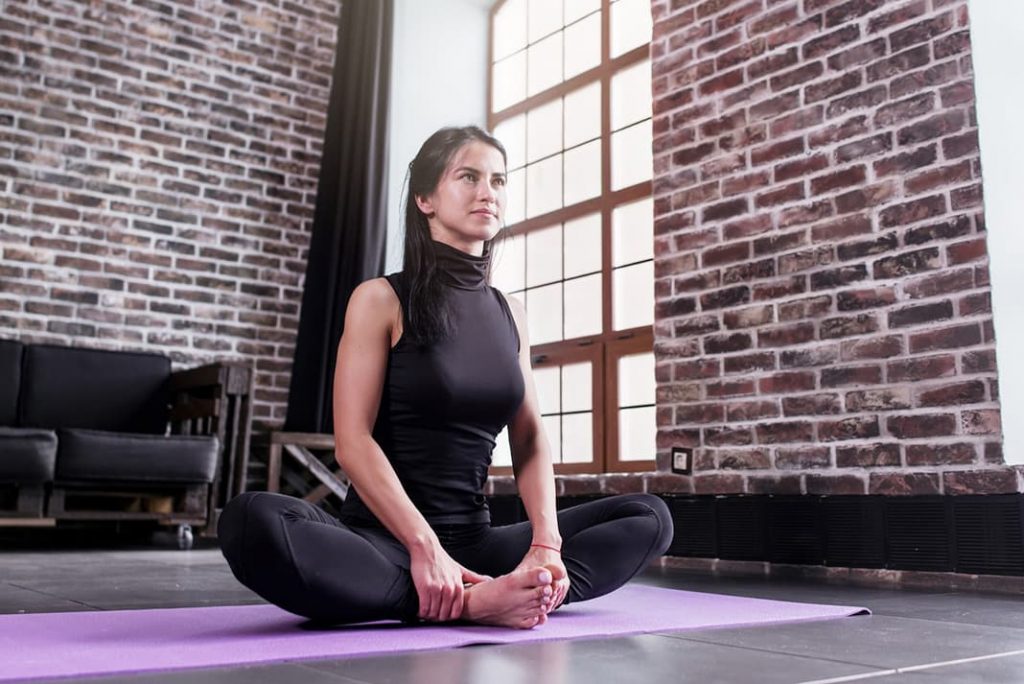
Your hip muscles may be especially prone to tightness these days because too much sitting can cause your hip muscles to shorten, Stretching out tight hips doesn’t just make you more comfortable in the moment—it can make everyday activities a little easier, This simple stretch helps the hips, glutes, back, and thighs. Sit on the floor with your back tall and your soles together. Bend your knees out to the side.
“Hips are the engine of the body: They help us walk, run, jump, and sit”
To perform a butterfly stretch, sit on the floor with your legs stretched in front of you. Bring your feet in towards your inner thighs, pressing the soles of your feet together. Let your knees fall to either side, pressing down towards the floor. Hold your feet with your hands, keeping your spine as elongated as possible.
Shoulder Squeeze Exercise
The shoulder joint is the major joint connecting the upper limb to the trunk. It is also the most mobile of joints in the human body, however, because of this it is also one of the joints most susceptible to problems, This stretch relieves poor posture and releases tension in the back. Sit on the floor with your knees bent and feet flat. Clasp your hands together behind your lower back and straighten and extend your arms.
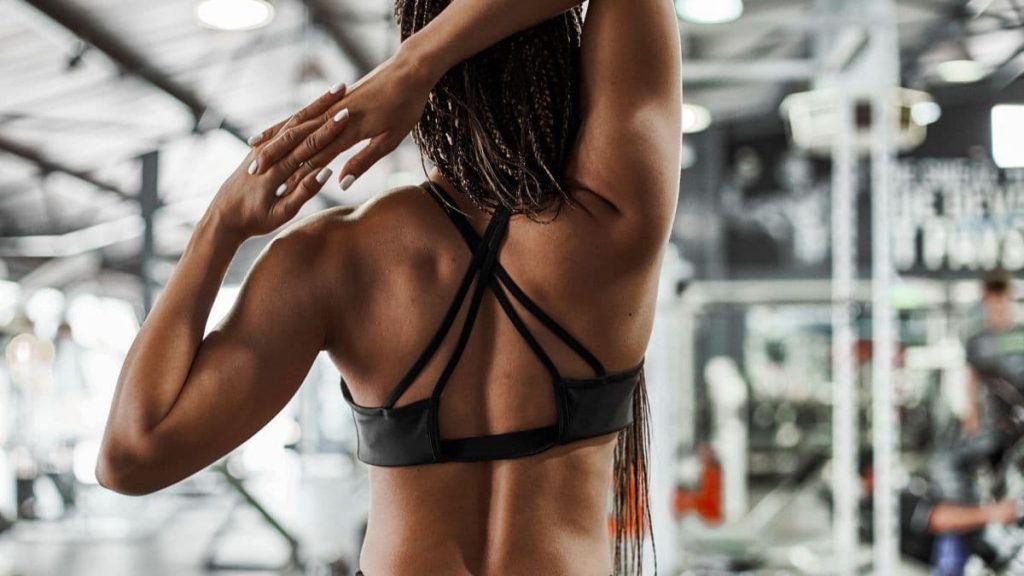
The shoulder joint is held together by a combinations of ligaments, muscle, and fibrous cartilage. It’s important to exercise this joint in order to build a more stable, stronger, mobile, and functional shoulder joint. It is necessary to keep this joint and all the attachments and muscles strong around it as it is the joint that operates and assists in all the motions of the arm.
Stand straight and tall. Pull your shoulder blades back and slightly downward to bring your elbows back and inward. Return to the starting position. Repeat 10 times.
Keep Working on Your Dance Flexibility
No one has ever become flexible overnight. To improve your dancer flexibility, stretching should be apart of your daily routine. Just keep at it and you’ll start to see a noticeable difference.
Flexibility is not an added benefit, it is something of a necessity for dancers. In fact, it’s something that footballers, bodybuilders, martial artists, swimmers and anyone who wants a strong, healthy body is investing in.
It will serve you in multiple ways, but it will need you to be extra patient with yourself on the bad days. It will demand you to be okay with a certain kind of pain, usually called ”good pain” by dancers. Now let`s go and do some stretching
